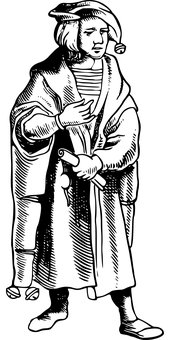How did professorships come about?
 The medieval European university suffered from financial-related teaching staff shortages. It was often difficult to persuade scholars to teach because there was little gain for them, so efforts were stepped up to provide stipends to pay teachers. The teacher shortage problem is illustrated by Jones and Underwood, the authors of The King’s Mother: Lady Margaret Beaufort, Countess of Richmond and Derby – which is focused on the life and achievements of the mother of the first Tudor king of England, Henry VII. These authors explain that:
The medieval European university suffered from financial-related teaching staff shortages. It was often difficult to persuade scholars to teach because there was little gain for them, so efforts were stepped up to provide stipends to pay teachers. The teacher shortage problem is illustrated by Jones and Underwood, the authors of The King’s Mother: Lady Margaret Beaufort, Countess of Richmond and Derby – which is focused on the life and achievements of the mother of the first Tudor king of England, Henry VII. These authors explain that:
There had been … attempts to provide lectures with a more secure financial basis. In 1432 Oxford had pleaded with John Duke of Bedford to endow some masters to lecture in the arts and other faculties. Later in the century Cambridge arranged to give some direct support to regents lecturing for the university by a system of collection from colleges through the university bedells. In 1481-2 an attempt was made to maintain a theology lecturer out of the royal benefaction elsewhere. The bishop of Salisbury, Richard Beauchamp, had persuaded Edward IV to endow a chantry in St George’s chapel at Windsor and grant the nomination of the priest who would serve it to Oxford University. The university petitioned that this priest should be allowed time to lecture in theology at Oxford.
(Jones and Underwood,1992, pp. 205-6)
Most early professorships or pre-professorship posts were endowed, which means that money was ring-fenced for stipends to pay the incumbents – ensuring that they could be called upon to provide teaching. So professorships evolved from stipendiary (paid) teaching posts. The endowments were effectively the gifts of wealthy patrons: in medieval times these were members of the royal family or nobility, such as Henry VII’s mother, Lady Margaret Beaufort.
When Margaret Beaufort’s grandson, King Henry VIII, founded the first regius professorships in England in the 1540s, they each came with a stipend that is calculated at £40 by the authors of the Encyclopaedia of Oxford, Hibbert and Hibbert. Some relatively early professorships, however, came with no salary. When the town council of Edinburgh founded a chair in chemistry at the University of Edinburgh in 1713, James Crawford was appointed to it – he was professor of physic and chemistry, and it was hoped that his appointment would obviate the need for Scottish students to travel abroad to study these subjects.
The University of Edinburgh website indicates that ‘Crawford was allotted two apartments in the college for teaching purposes but was awarded no salary’. It is hardly surprising therefore that ‘He appears to have given courses on an irregular basis’ [1]. Similarly, the first incumbent of Edinburgh University’s chair of rhetoric and belles lettres (which was essentially English literature), Hugh Blair, received no salary for his work on his appointment in 1760. On the basis of the popularity of his courses, however, application was made to the Crown to endow the chair, and on 21st July 1762 King George III accordingly recognised Blair as regius professor of rhetoric and belles lettres at Edinburgh with an annual salary of £70. He held the chair until 1784 [2].
Professorships have continued to be endowed through the centuries. Endowed professorships tend to reflect the names of the founding patrons who put up the money for them. As the centuries passed, patrons have included not only distinguished individuals but also organisations, institutions and private foundations.
